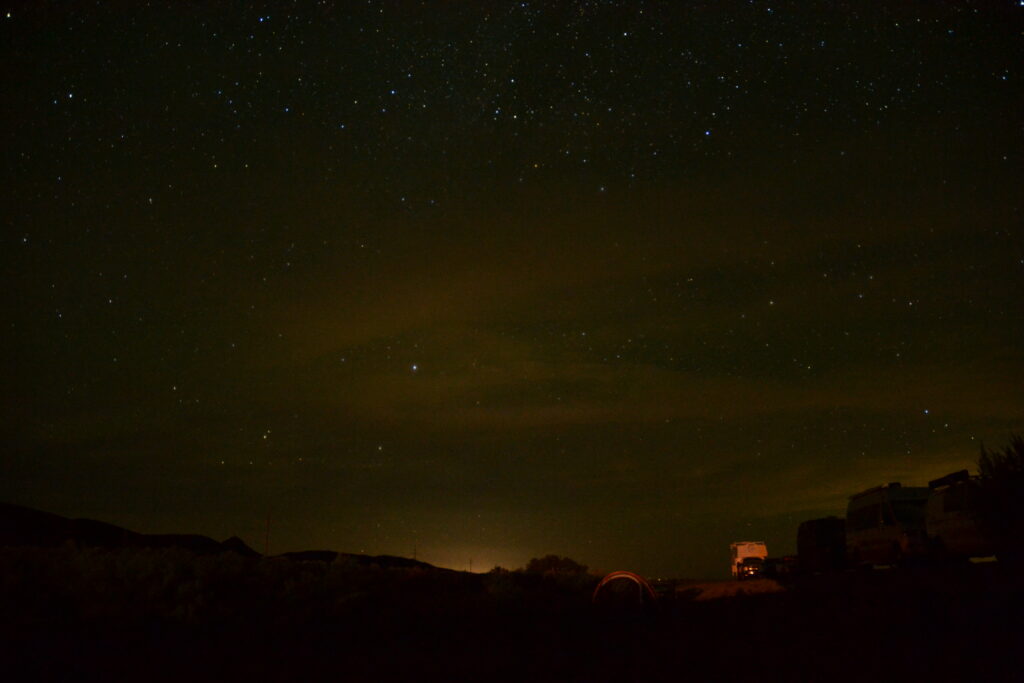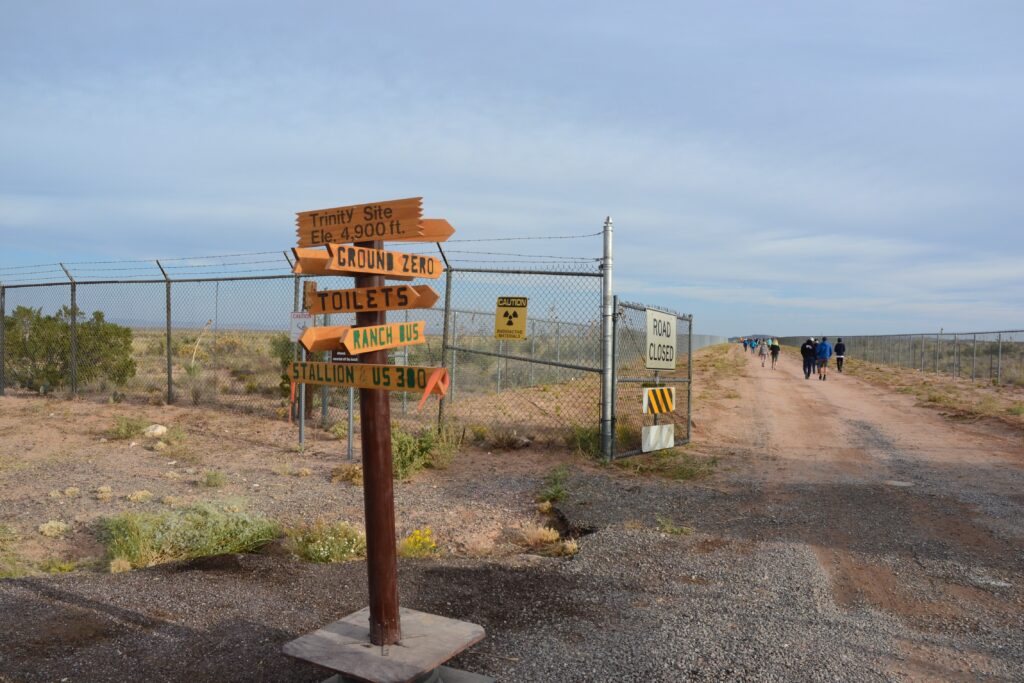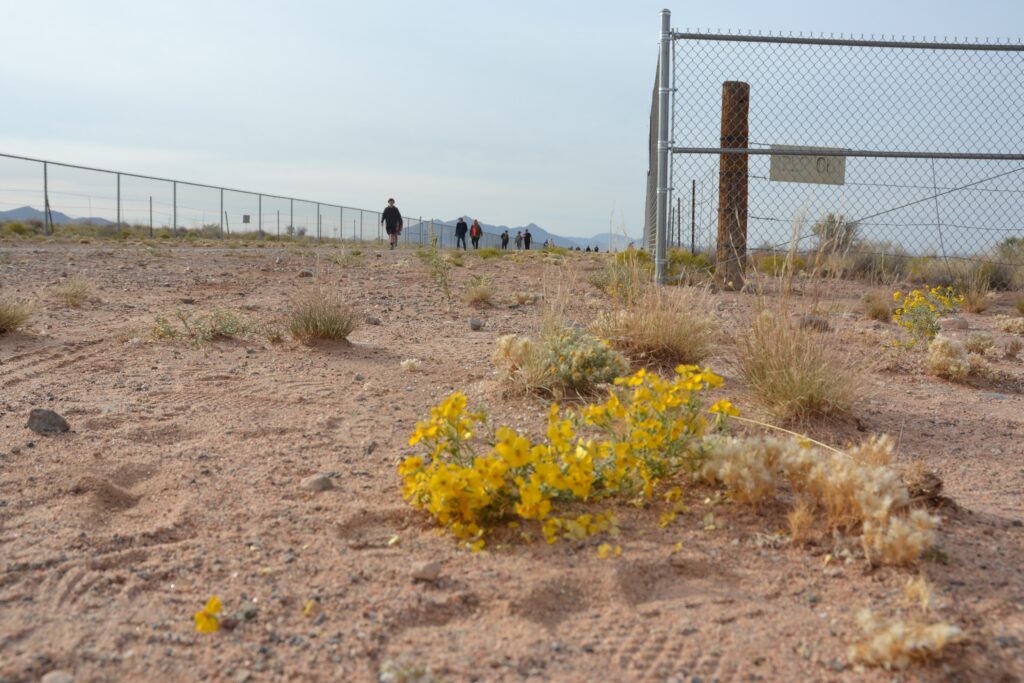As of the writing of this post, I have seen “Oppenheimer” [1] five times since it was released in July 2023 (twice with Christian on opening weekend, and most recently sharing it with my mom). I had been looking forward to it as soon as I found out about it (probably sometime in early 2023), excited about a physics-based blockbuster from one of my favorite directors. And, of course, in Christopher Nolan style, it was complex and long. I am looking forward to seeing how it does during awards season, with stellar writing, acting, directing, score, and special effects. I don’t intend to go into a huge tangent on the movie, but I did want to mention it because of how expertly it portrayed a complex issue without preaching about it, and without making the protagonist a clear-cut hero or villain. It is also, according to Oppenheimer’s biographer, pretty accurate. [2],[3]

Although I knew I would be traveling to see the October 14 eclipse, I didn’t expect to go to the Southwest. My original plan was to go to the west coast to see friends, but the closer we got to “go time,” it became clearer that the Pacific northwest would not provide us with a good chance to see the eclipse. With little time to plan, we started looking at other options along the eclipse path, including New Mexico. While doing that research, I came across the fact that Trinity (the location of the first atomic bomb test) is open to the public two days a year, and that one of those days would be one week after the eclipse. [4] I was very excited about the opportunity to see Trinity in person … and apparently so was everyone else who had just seen “Oppenheimer.”
Science, Science Fiction, and History
I first learned about the Trinity site when I was in college studying physics. Part of our major was a class called “The History of Physics,” which included a hefty book on the making of the atomic bomb (also the title).[5] I don’t deny that I never got around to cracking the book in college, but I hung onto all of my books over the years, and once we determined we were going to New Mexico, with an attempt to get into Trinity, I grabbed it off the shelf and got started. The book itself is an incredibly detailed and comprehensive 800-page tome of the advancements in physics in the context of the history, sociology, and economics of the early 20th century. Although I wasn’t about to select it for book club, I have enjoyed it as a who’s who of physics.

Adding the Trinity visit turned what was originally going to be a long weekend into a two-week excursion, with a physics-y activity two Saturdays in a row. While we had the flexibility to go anywhere from Oregon to Texas to view the eclipse (ultimately it was Utah), Trinity cemented New Mexico into our itinerary before I fully understood its connection with my 90s nostalgia. [6] I had forgotten that “Quantum Leap” was based in New Mexico, but when I unlocked that fact, along with it came a memory of me enthusiastically drawing a map of the state on a whiteboard and explaining to one of my mom’s university colleagues exactly where the project site was located – at Stallion’s Gate, New Mexico. [7] And it was in planning for this trip that I learned that Stallion’s Gate is not a real town (that we know of!), but that the gate where we would wait to get into White Sands Missile Range (and the Trinity site), is called the Stallion Gate. At this point, I was not planning a vacation, but a pilgrimage.
But as I said, we weren’t the only ones. It takes a special level of enthusiasm to travel to the middle of nowhere and wait in line to see, as Christian described it, “an obelisk in the middle of an empty plain,” without any guarantee of actually getting in. It is a first-come, first-served line, with groups of cars being allowed through the gate at 8am. If you’re not on site by early afternoon, they won’t let you in. When I called the army office at White Sands Missile Range for guidance on when we should plan to get there, [8] I was informed that people start lining up to get in the night before in “normal years.” This year was not normal because of so many tourists going to see the Trinity site and Los Alamos after watching the movie. (We had visited Los Alamos a few days before, and they had had more than twice the number of tourists that year, mostly since the release of Oppenheimer.)

Knowing that I had been interested in seeing Trinity for years, Christian was not about to weigh in with a suggestion that might risk our ability to get in at all, e.g. getting a hotel room “nearby” and checking out before dawn to drive over and get in line, so we planned to wait in the car overnight, starting south from Albuquerque as late as possible. As it happened, we didn’t have much to do that evening other than just drive to the site, so we got there a little earlier than intended, around 10pm. We decided to take a brief excursion to a brewery in one of the last towns listed on the map, Socorro. Approaching the exit on the highway, we saw a sign for the Very Large Array (an array of radio telescopes, which you would most likely recognize from the beloved 90s movie “Contact.”) I was so excited I almost drove off the road. And we suddenly had plans for the next day after we left Trinity. But first things first…
Getting There
There was very little guidance on how to find the entrance to a closed government facility, and we were so far away from civilization that we lost cell service and couldn’t rely on Google maps. Downloading a map and having written directions ahead of time was essential, but even then it wasn’t entirely clear. Fortunately, there was a sign by the road about Trinity, and even though there was no additional signage about next steps or where we should start to line up, we assumed we were close to the right place. We turned off the main road after the Trinity sign and drove about five miles through blackness until we arrived at a line of parked vehicles. Note: all of this probably would have been a lot easier to navigate in the daylight, but all we could really do was look for tail lights and assume they belonged to cars carrying other physics and history nerds.

Since we arrived earlier than intended, we were about 13th in line, parked behind many RVs and not many cars. As I said in my last post, we were in a Prius, which did not provide much insulation or comfort for us on what would be a cold desert night. We spent some time chatting with others parked around us, I took some photos of the stars, and Christian pulled up some movies on his tablet while we tried to get comfortable and at least pass the time if we couldn’t sleep. My fitful sleep was peppered with snippets of “Gladiator” and “Batman Begins.” Had “Oppenheimer” been streaming or downloadable at the time, I’m sure my view count would now be six.
Around sunrise, people were getting out of their cars, making coffee on camp stoves, and checking to see how long the line had become – we couldn’t see past a slight hill, but Christian was hoping it stretched back to the main road to justify the long, uncomfortable, sleepless wait he just endured. It was fun chatting with people who had come from all over the country. We were parked behind a woman from Washington and in front of a man from Louisiana, who referred to the excited buzz among the gaggle of tourists as “nerd Coachella.” I believe that most of the people we talked to had seen the movie, but there were plenty of people in line who seemed to have an independent interest in the subject, including some active and ex-military.

Because of a very clear sign on the gate about no marijuana products of any kind being allowed on site, we noticed a last-minute scramble from some of the people around us to move items from their cars to the bushes along the side of the road. We didn’t have to worry about that, but we did have some unopened bottles of quality alcohol packed up in the trunk, which we were ultimately told could not come on site. Since we were honest in our reply to the guard about what was in our car, we were pulled out of line – the first car that was – which was a little scary. We had to take the bottles out of our car, stash them behind a bush, and hope they were there when we got back. With all of the RVs in front of us, it was amazing to think that not one of them had a single bottle of beer in the fridge.
Field of Dharma
After we were through the gate, we proceeded in a caravan, not allowed to take any pictures until we were in the parking lot at the site. From the parking lot, it was a short-ish, fenced-in walk to Trinity. It was a strange experience being there, the place where the modern era of physics, energy, and warfare began. The remaining foot of the tower that held the bomb was nothing more than a few pieces of metal sticking out of the ground. Next to that was the obelisk marking the place and the day. Mounted along the fence was a series of pictures from the Manhattan project and the war; I didn’t make it through without crying.

The atmosphere was a mix of excited and solemn, recognizing the sheer weight and consequence of what happened there. I thought about Oppenheimer’s reference to John Donne in naming the site, thinking of the paradoxical nature of Donne’s “Holy Sonnet” [9], [10] and the paradoxical nature of quantum physics. I thought about Oppenheimer quoting Lord Krishna from the “Bhagavad Gita” after the test, and how he must have felt a little like Arjuna, grappling with the prospect of leading people to war (or at least leading the creation of a new weapon) and killing others in the name of righteousness and duty. [11]
Of course, my original intention was to write something more extensive in this post about Hindu holy scripture and its connection to war in the atomic age. Over Christmas we showed my mom “Oppenheimer,” and she appreciated the connection instantly. She’s the one who first brought me along to classes on the Bhagavad Gita and Hindu philosophy in the 90s, sparking my interest in eastern religions and many subsequent late-night discussions between the two of us about war, peace, life, spirituality, physics, and the nature of the universe. Being able to tie science and religion together over the course of my adult life has been significant to me at a foundational level, and I’m grateful that I was able to share that with her over the years, culminating in us watching “Oppenheimer” together and staying up to talk about it. But I’ll save further thoughts on that subject for another time.

Thank you so much for reading.
Keep Reading About ’90s Nostalgia –>
[1] https://www.imdb.com/title/tt15398776/
[2] https://www.sciencefriday.com/person/kai-bird/
[3] https://www.goodreads.com/en/book/show/80571
[4] https://www.nps.gov/whsa/learn/historyculture/trinity-site.htm
[5] https://www.goodreads.com/en/book/show/16884
[6] https://radicalmoderate.online/the-30-year-nostalgia-cycle/
[7] https://quantumleapanalyses.tumblr.com/post/141399231597/quantum-leap-trivia-66
[8] https://home.army.mil/wsmr/contact/public-affairs-office/trinity-site-open-house
[9] https://www.poetryfoundation.org/poems/44106/holy-sonnets-batter-my-heart-three-persond-god
[10] https://digitalcommons.odu.edu/cgi/viewcontent.cgi?article=1103&context=ourj
[11] https://en.wikipedia.org/wiki/Bhagavad_Gita#
0 Comments